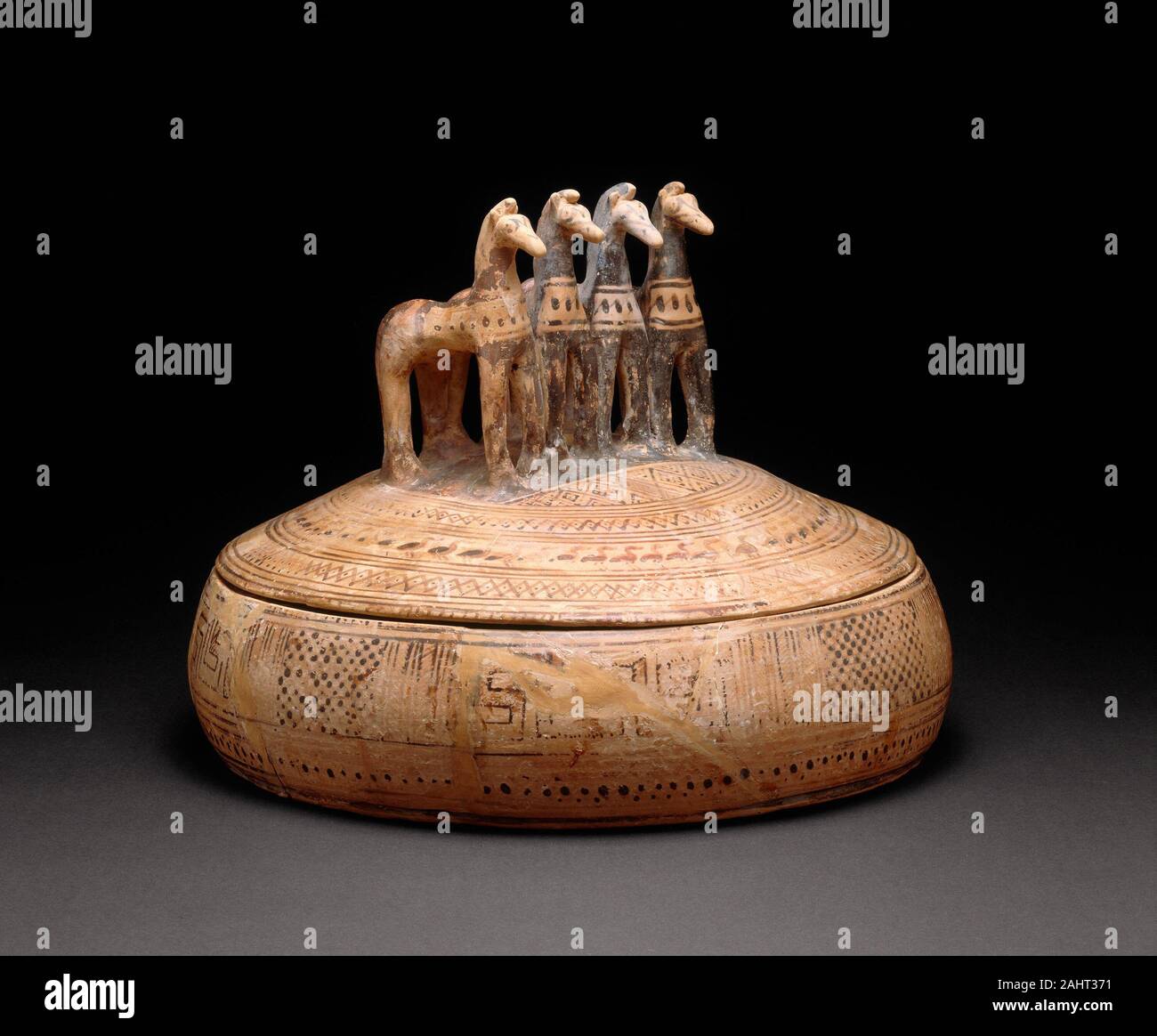Ancient Greek. Pyxis (Container for Personal Objects). 730 BC–720 BC. Athens. terracotta Ceramic vessels decorated with repetitive linear designs were so popular during the 8th and 7th centuries BC that the term Geometric applies to both the style and the time period (800–600 BC). The body of this container is decorated with popular ornamentation, among them Greek key pattern, or meanders, as well as checkerboard patterns, dotted and crosshatched lozenges, and chevrons.The handle of this vase takes the form of horses standing side by side, suggesting a team for a four-horse chariot. Ownership

Image details
Contributor:
WBC ART / Alamy Stock PhotoImage ID:
2AHT371File size:
21.3 MB (615.7 KB Compressed download)Releases:
Model - no | Property - noDo I need a release?Dimensions:
3000 x 2479 px | 25.4 x 21 cm | 10 x 8.3 inches | 300dpiMore information:
This image is a public domain image, which means either that copyright has expired in the image or the copyright holder has waived their copyright. Alamy charges you a fee for access to the high resolution copy of the image.
This image could have imperfections as it’s either historical or reportage.
Ancient Greek. Pyxis (Container for Personal Objects). 730 BC–720 BC. Athens. terracotta Ceramic vessels decorated with repetitive linear designs were so popular during the 8th and 7th centuries BC that the term Geometric applies to both the style and the time period (800–600 BC). The body of this container is decorated with popular ornamentation, among them Greek key pattern, or meanders, as well as checkerboard patterns, dotted and crosshatched lozenges, and chevrons.The handle of this vase takes the form of horses standing side by side, suggesting a team for a four-horse chariot. Ownership of horses was an important indicator of financial status, since only the wealthy could afford to possess and train them.